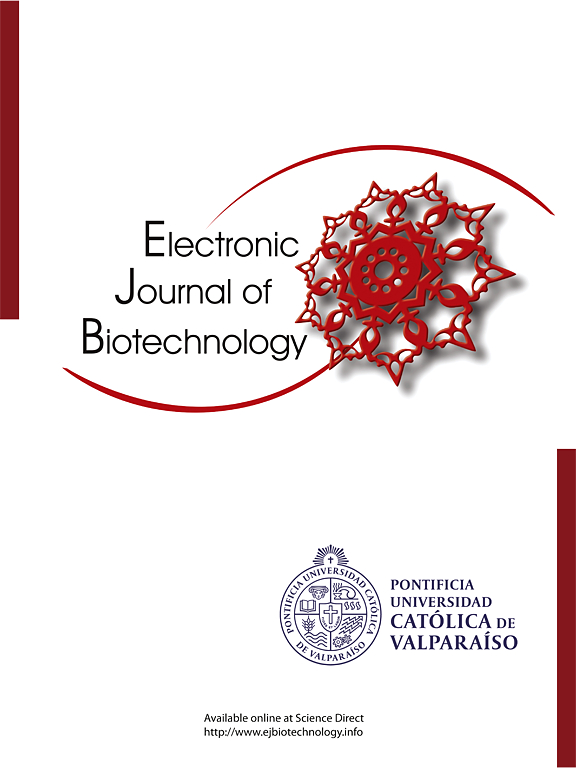天麻颗粒:连接传统医学与现代科学,通过铁下垂对抗结直肠癌
IF 2.5
4区 生物学
Q3 BIOTECHNOLOGY & APPLIED MICROBIOLOGY
引用次数: 0
摘要
本研究旨在探讨天麻颗粒在结直肠癌中的诱导铁凋亡作用,并阐明其分子机制。铁下垂是一种铁依赖性的细胞死亡形式,是癌症治疗的新靶点。我们将网络药理学与实验验证相结合,探索TMG通过调节铁下垂的抗癌潜力。结果网络药理学鉴定出382个铁中毒相关基因与12944个crc相关靶点重叠(p < 0.05),其中SLC7A11、GPX4、SAT1、PTGS2和GLS2优先作为核心靶点。在体外,TMG剂量依赖性地抑制结直肠癌细胞增殖(p < 0.05),提高活性氧(p < 0.05)和亚铁离子水平(p < 0.01),这种作用被铁下垂抑制剂铁抑素-1逆转。c-Casp3水平不变(p > 0.05),不包括细胞凋亡。透射电镜显示线粒体嵴碎裂和空泡化,这是铁下垂的标志特征。分子分析显示,tmg介导SLC7A11和GPX4下调,SAT1、PTGS2和GLS2上调(p < 0.05)。在异种移植模型中,高剂量TMG (23.2 g/kg)减少了肿瘤体积,减轻了恶病质,升高了肿瘤内ROS和Fe2+水平(p < 0.01),证实了铁下垂在体内的诱导作用。结论stmg通过双重抑制SLC7A11/GPX4和激活SAT1/PTGS2/GLS2来诱导铁下垂,从而抑制结直肠癌的进展。这项研究将传统医学和铁下垂生物学联系起来,将TMG定位为CRC的一种新的治疗候选药物。引用方式:丁宁,唐旭,张勇,等。天麻颗粒:连接传统医学与现代科学,通过铁下垂对抗结直肠癌。中国生物医学工程学报(英文版);2009;38。https://doi.org/10.1016/j.ejbt.2025.06.004。本文章由计算机程序翻译,如有差异,请以英文原文为准。

Tianma granules: Bridging traditional medicine and modern science to combat colorectal cancer via ferroptosis
Background
This study aims to investigate the ferroptosis-inducing effects of Tianma Granules (TMGs) in colorectal cancer and elucidate its molecular mechanisms. Ferroptosis, an iron-dependent form of regulated cell death, represents a novel therapeutic target for cancer. We combined network pharmacology with experimental validation to explore TMG’s anti-cancer potential through ferroptosis modulation.
Results
Network pharmacology identified 382 ferroptosis-related genes overlapping with 12,944 CRC-associated targets (p < 0.05), with SLC7A11, GPX4, SAT1, PTGS2, and GLS2 prioritized as core targets. In vitro, TMG dose-dependently suppressed CRC cell proliferation (p < 0.05), elevated reactive oxygen species (p < 0.05) and ferrous ion levels (p < 0.01), effects reversed by ferroptosis inhibitor, Ferrostatin-1. c-Casp3 levels were unchanged (p > 0.05), excluding apoptosis. Transmission electron microscopy revealed mitochondrial cristae fragmentation and vacuolation, hallmark features of ferroptosis. Molecular analyses demonstrated TMG-mediated downregulation of SLC7A11 and GPX4, alongside upregulation of SAT1, PTGS2, and GLS2 (p < 0.05). In xenograft models, high-dose TMG (23.2 g/kg) reduced tumor volume, attenuated cachexia, and elevated intratumoral ROS and Fe2+ levels (p < 0.01), corroborating ferroptosis induction in vivo.
Conclusions
TMG suppresses CRC progression by inducing ferroptosis via dual inhibition of SLC7A11/GPX4 and activation of SAT1/PTGS2/GLS2. This study bridges traditional medicine and ferroptosis biology, positioning TMG as a novel therapeutic candidate for CRC.
How to cite: Ding N, Tang X, Zhang Y, et al. Tianma granules: Bridging traditional medicine and modern science to combat colorectal cancer via ferroptosis. Electron J Biotechnol 2025;78. https://doi.org/10.1016/j.ejbt.2025.06.004.
求助全文
通过发布文献求助,成功后即可免费获取论文全文。
去求助
来源期刊

Electronic Journal of Biotechnology
工程技术-生物工程与应用微生物
CiteScore
5.60
自引率
0.00%
发文量
50
审稿时长
2 months
期刊介绍:
Electronic Journal of Biotechnology is an international scientific electronic journal, which publishes papers from all areas related to Biotechnology. It covers from molecular biology and the chemistry of biological processes to aquatic and earth environmental aspects, computational applications, policy and ethical issues directly related to Biotechnology.
The journal provides an effective way to publish research and review articles and short communications, video material, animation sequences and 3D are also accepted to support and enhance articles. The articles will be examined by a scientific committee and anonymous evaluators and published every two months in HTML and PDF formats (January 15th , March 15th, May 15th, July 15th, September 15th, November 15th).
The following areas are covered in the Journal:
• Animal Biotechnology
• Biofilms
• Bioinformatics
• Biomedicine
• Biopolicies of International Cooperation
• Biosafety
• Biotechnology Industry
• Biotechnology of Human Disorders
• Chemical Engineering
• Environmental Biotechnology
• Food Biotechnology
• Marine Biotechnology
• Microbial Biotechnology
• Molecular Biology and Genetics
•Nanobiotechnology
• Omics
• Plant Biotechnology
• Process Biotechnology
• Process Chemistry and Technology
• Tissue Engineering
 求助内容:
求助内容: 应助结果提醒方式:
应助结果提醒方式:


